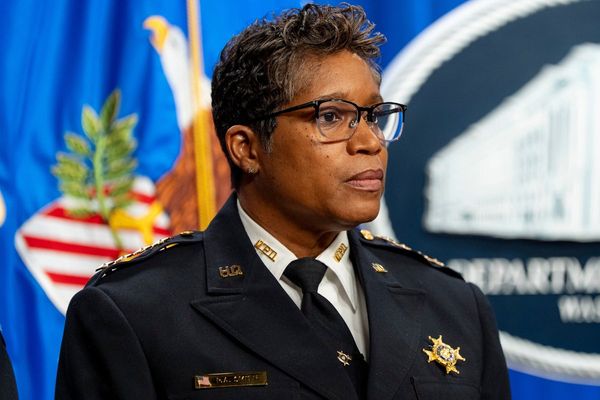
There weren’t a ton of college football rule changes between the 2023 and 2024 seasons, but there were a few. One of the big ones is a two-minute timeout at the end of each half.
Another big one, though, was allowing helmet radios for coach-to-player communication, and that was a long time coming.
Gone are the days of hand signals, obscure sideline signs and plays written on quarterbacks’ arms. Well, those are still around and options for teams, but they’re no longer the only option with the introduction of helmet communication for the 2024 college football season.
Back in April, the NCAA approved in-helmet communication for FBS teams. However, as the Associated Press noted, it’s unclear how many teams will actually use it this season.
The debate over implementing in-helmet communication was reignited last season in the wake of Michigan football’s sign-stealing scandal, which may not have been an (efficient) option if helmet communication was a thing then.
But 30 years after the NFL allowed communication between coaches and players, the NCAA has finally followed.
How do in-helmet radios in college football work?
It’s relatively simple in the 2024 NCAA college football rulebook: One player on offense and one player on defense on each team will be able to have their coach in their ear, and those players will have a green dot on their helmets signifying they’re the ones with a radio. And still, only one player per team can have a green dot helmet on the field at a time — free kick plays aside.
The green dot has to be unbranded, so hopefully it’ll be noticeable.
More via the NCAA college football rulebook:
If more than one green dot helmet per team is detected on the field by the game officials, the result is a live ball 5-yard equipment violation penalty, and this penalty initiates a conference review
But the coach-to-player communication isn’t unlimited.
The radio will be turned off either at the 15-second mark on the play clock or when the ball is snapped — whichever comes first. And it’s turned back on when the play clock resets.
Also, it’s truly coach-to-player only, as the helmets will only have receiving capabilities, per the NCAA rulebook.

What do college football coaches and players think of the helmet communication?
It’s hard to tell how this is going to work or even how many teams will use the in-helmet radios. Some coaches seem to like it, some don’t, and others predict it’ll have a noticeable impact on the game.
“On offense, it’s seismic,” Nebraska coach Matt Ruhle said, via the Associated Press. “You are able to remind the quarterback not just of the play but also the situation. Just the thought process, right? ‘Hey, it’s third and 7, two downs, take the check down if it’s there and it gives us fourth and 3.’”
Another related NCAA rule update for the 2024 season
Also in April, the NCAA approved using tablets, also like the NFL. Tablets will be permitted for viewing in-game video from the coaches’ booths, on the sideline and in the locker rooms, and all team personnel will be allowed to use them during the games.







